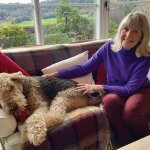Helen Shepherd reports on how two Chesterfield sisters made their mark in the USA.
THERE are plenty of examples of remarkable Derbyshire women making their mark on local history, from the redoubtable Bess of Hardwick to the first female mayor of Chesterfield, Violet Markham. What is perhaps less well known are the stories of women who were born in the county but went on to achieve recognition thousands of miles away from home.
Two of these women were Elisabeth Freeman and her sister, Jane. Born in Chesterfield, they moved to the USA as children where they would go on to forge very different, but equally successful, careers.
The sisters’ early life in Chesterfield appears to have been fragmented and even a little chaotic. Elisabeth, the youngest of the family’s three children, was born in September 1876 to George Freeman and Mary Hall. George and Mary, both Derbyshire natives, had married only two years before in 1874, so it’s possible that George wasn’t the father of Mary’s two older children – Jane, who was born in 1871, and John, born in 1873.
“If life in Chesterfield was indeed as messy as it appears, it would perhaps explain why, in 1882, Mary and her three children – without George – boarded the Cunard ship SS Abyssinia at Liverpool and set sail for a new life in the USA.”
Similar mystery surrounds their time in Chesterfield. Although family lore says that they lived in the shadow of the crooked spire, there is little evidence to suggest that the Freemans spent much time under the same roof and they are often missing from the records altogether. If life in Chesterfield was indeed as messy as it appears, it would perhaps explain why, in 1882, Mary and her three children – without George – boarded the Cunard ship SS Abyssinia at Liverpool and set sail for a new life in the USA.
On arrival, Mary took a job at the St Johnland orphanage on Long Island, where the family lived for some time before moving to either New York City or Newark, New Jersey. While John did odd jobs to earn money, later becoming an apprentice printer and eventually a newspaper typesetter, options for his sisters were far more limited. Elisabeth, in particular, appears to have struggled to find a purpose in life; until a return trip to the UK in 1905 and a chance encounter on a London street.
Like many women of her generation, it was the suffrage movement that pulled Elisabeth into the world of social campaigning. Walking through the city one day, she saw a police officer beating a young female protester and ran to help. Both women were arrested and Elisabeth was transformed almost instantly into a militant suffragette. She later said: “I found out in jail what cause we were fighting for”.
For the next six years, she and her mother Mary remained in England and Elisabeth threw herself into what was, for her, an almost spiritual struggle for the vote. Aligning herself with the radical Women’s Social and Political Union (WSPU), headed by the formidable Pankhursts, she sold suffrage newspapers, helped to organise demonstrations and spoke at public meetings. She was arrested nine times, serving at least two sentences in Holloway, and was awarded the WSPU’s medal of honour; a pin badge depicting a prison gate.
When Elisabeth and Mary returned to the USA in 1911, Elisabeth took all she had learned from her time with the WSPU and threw herself into what was then a lacklustre American suffrage movement. Working with several organisations in and around New York, she gave public lectures, distributed newspapers and pamphlets, and organised events and marches. She had a particular flair for public relations and publicity stunts, and her campaigning often made headlines in the local press.
In 1912, Elisabeth and a fellow suffragette, Rosalie Jones, took a horse and wagon – the latter painted bright yellow – across Ohio, making speeches at every stop and holding meetings whenever possible.
An even tougher trek from New York to Washington DC was undertaken in 1913. Dubbed the ‘suffrage hike’, Elisabeth’s party of campaigners joined thousands of others arriving in the capital ahead of President Woodrow Wilson’s inauguration. Elisabeth was the official speaker for the trip and also drove the literature wagon, offering palm reading and fortune telling to curious onlookers as a way of attracting a crowd.
The following year she undertook a horse-drawn carriage trip from New York to Boston and was later paid to hike through upstate New York, giving speeches and stirring up support for the suffrage cause.
Her skills as a speaker meant that Elisabeth was soon being sought out by organisations across the USA to campaign on their behalf. In 1916, she joined a group of prominent women travelling aboard the Women’s Campaign Special; a train that criss-crossed the USA, drumming up support for Republican presidential candidate and suffrage supporter Charles Evans Hughes.
During the campaign, the ‘Hughesettes’ travelled more than 11,000 miles across 28 states, giving over 1,800 speeches. Such was their impact that rival Democrats resorted to a smear campaign, accusing the women on the train – wrongly – of being drawn from the ‘idle rich’. This was no doubt particularly galling to Elisabeth, who came from a humble background and who, amongst her other campaigning, often spoke in favour of trade unions and the women’s labour movement.
Following the USA’s entry into World War I in 1917, Elisabeth became part of the Emergency Peace Federation, a coalition of pacifist organisations that opposed the country’s involvement in the war and the associated threat to civil liberties. The pacifist message was not a popular one and many organisations and newspapers saw anti-war campaigning as unpatriotic and even treasonous. As a result, Elisabeth brought herself to the attention of the US senate, which included her on its list of dangerous pacifists and radicals.
However, it was a year earlier, in 1916, that Elisabeth had become immersed in her most remarkable and undeniably dangerous campaign. On her way to Texas to undertake a speaking tour on behalf of the state’s Women’s Suffrage Association, she met a man called Roy Nash. Nash was working with the civil rights organisation, the NAACP, and asked Elisabeth to use her time in Texas to investigate the recent brutal lynching of a young black man, Jesse Washington, in Waco. In a letter to her in May of that year, Nash wrote “Will you not get the facts for us? Your suffrage work will probably give you an excuse for being in Waco.”
Seventeen-year-old Washington had been found guilty of murdering the wife of his white employer. Following the verdict, he had been dragged from the courthouse by a mob, hauled through the streets and subjected to horrific violence before being strung up and burned, in front of at least 10,000 onlookers.
Elisabeth was appalled by the case and took on the commission with gusto. She spent around a week in the city, interviewing witnesses and bravely confronting officials and others who may have been complicit in the attack. Despite using her suffrage work as a cover, Elisabeth clearly drew enough attention to put herself in potential danger. One family member recorded that she was told to “get out of town before you are hanging on that tree”.
The story Elisabeth uncovered showed that, far from the attack on Washington being a spontaneous display of anger by extremists, it had been planned in advance, with the collusion of huge numbers of people. A photographer had even been tipped off and was on hand to capture the whole horrific event. Her report gave Roy Nash just what he needed to highlight the appalling practice of lynching and boost recruitment to the NAACP, and it gave Elisabeth herself a new cause.
The cruelty of the case outraged her and she became a vocal supporter of the civil rights movement, undertaking two national speaking tours on behalf of the NAACP and its anti-lynching campaign. Although black audiences were often initially suspicious of Elisabeth – there can’t have been many other white, English-born women involved in the campaign – she won them over with her conviction to the cause. She would go on to regularly address black audiences on the subject of suffrage and labour rights, as well as racial injustice.
While Elisabeth was busy stirring up the crowds across the USA, her sister Jane had found an altogether different calling. The eldest of the Freeman siblings, she had discovered a love of art as a young girl. After working as an artist’s model and illustrator and training in New York and Paris, she launched a successful career as a painter, in particular as a portraitist. She won several awards throughout her life, exhibited across the USA and mounted solo exhibitions. Among her sitters were Nobel Prize winner Albert Schweitzer and Mother Cabrini, the first US citizen to be canonised by the Catholic Church.
Jane lived for most of her life in New York, where she taught several artists who became well-known in their own right. She also appeared on the radio and gave lectures on her craft. Whereas Elisabeth’s work kept her mainly in the USA, Jane’s travels took her as far afield as Spain, Morocco and Trinidad.
Like her sister, Jane was an active supporter of women’s suffrage. In 1915 she exhibited a painting of a mother and child, titled ‘Future Voter’, at an exhibition in New York City alongside works by more than 90 female artists, all intended to support and promote women’s suffrage. The image later featured on the cover of the magazine, The Delineator.
While Jane’s success continued until ill health began to slow her down in the early 1960s, Elisabeth appears to have fallen out of the limelight during the 1920s as her campaigning waned. Her hatred of social injustice did not fade, however, and she remained active in radical and welfare causes in and around New York City. On a final visit to England, she was reportedly detained by British Intelligence for attempting to smuggle in ‘seditious, Bolshevik literature’.
Elisabeth died in California, where she had moved for her health, on February 27, 1942, aged 65. Jane survived her by more than 20 years, dying at the grand old age of 92 on September 23, 1963. Neither sister married, both choosing to forge their own path as independent, self-sufficient women. Two amazing lives which ended in the USA but began in Derbyshire.






